PinotFile: 11.1 March 29, 2017
|
Chardonnay Smack DownThrough the years I have probably tasted more Pinot Noir and Chardonnay from Australia than many American wine writers. I owe this to my long time friendship with David Lloyd, owner and winemaker of Eldridge Estate in the Mornington Peninsula, Victoria, Australia. We met years ago at the International Pinot Noir Celebration and have gotten together several times since both in California wine regions and in Victoria, Australia. Some months ago, we decided to organize a Chardonnay smack down to coincide with David’s March trip to the U.S. to attend the World of Pinot Noir. He brought eight special Chardonnays from Australia, New Zealand and Burgundy, and I contributed eight carefully chosen Chardonnays from California and Oregon. The smack down was held at my house recently. David and I tasted blind (we knew the wines that were in the tasting but were masked) and the other attendees tasted double blind (they did not know the wines in the tasting). I then re-tasted the wines the following morning from previously opened bottles and this was revealing.
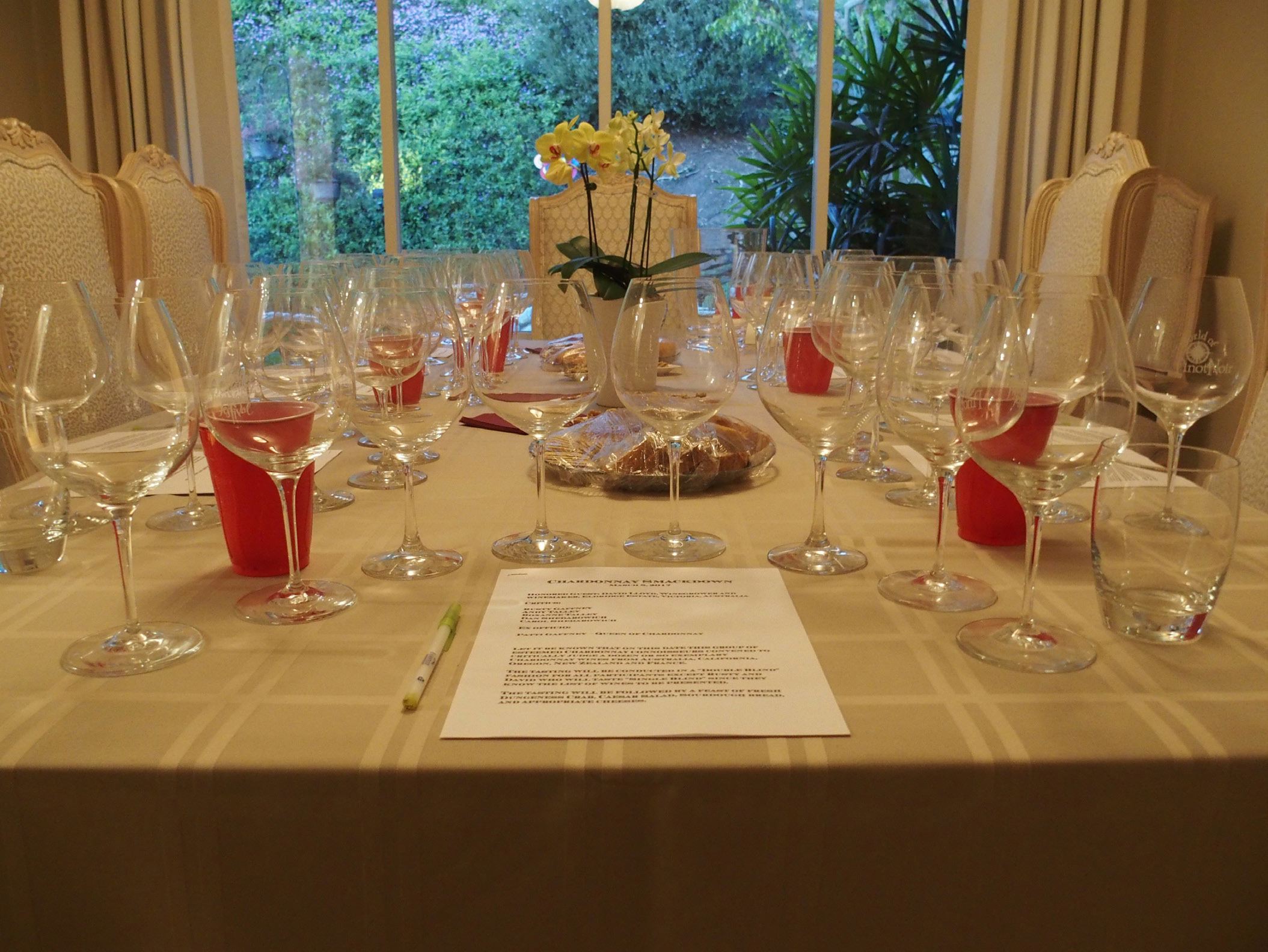 Six of the eight wines outside the U.S. came from Australia. All the popular Australian Chardonnay clones were imported from 1957 to 2007 as shown by the following timeline (Nick Dry, Yalumba Nursery). The Gingin clone was first imported by Houghton Winery in Margaret River in 1957 and is also referred to as the Mendoza clone as its origins are unclear. Nurseries in Australia report the highest sales from 2012 to 2016 were clone 95, 76 and 548. For the Australian perspective on the various Chardonnay clones: http://www.awri.com.au/wp-content/ uploads/2016/06/4-Chardonnay-Clones-NDry.pdf. American Chardonnay drinkers will be most familiar with the Dijon clones 75, 76, 78, 95 and 96, that were brought into the U.S. in 1984 and 1988 through Oregon, and certified by FPS between 1997 and 2002. There are now 34 Chardonnay clones officially certified by ENTAV-INRA™, with the most popular being 96, 76, 95, 277 and 548. Clone 809 is a popular French clone of the musqué type.
 The Wente clone (FPS 4) and Old Wente clone (originally FPS 2A, but now after heat treatment designated FPS 72) that are most popular in California, have not gained traction in Australia. Today, over 80 percent of the Chardonnay produced in California comes from some version of the Wente clone. In New Zealand, most of the Chardonnay is planted to clones 15 and Mendoza with lesser amounts of California clones, Dijon clones, and the new French clones 548, 121 and 1066. Dijon clone 96 has become the most frequently propagated Chardonnay clone in Oregon. David made his selection of Chardonnays over the course of four months by looking for wines of balance that he and his friends like to sit down at the end of a day and enjoy while watching the sun go down. His choices were all highly acclaimed wines. The highest rated wines were the Hollyman (97), Tarraford (96), Kevin John Cullen (96) and Eldridge Estate Wendy (95/96). The Neudorf from New Zealand was given a score of 98 by New Zealand writer Bob Campbell (95/96 by many Australian writers). David’s wines, except the Chablis, range in price from $55-$95 (Australia). I chose domestic wines based on either recent exceptional reviews by myself or others, or the reputation of the producer. Wines I had scored include Wayfarer (93-95), Peirson-Meyer (95), and Chappellet (94). My notes on the wines are a combination of impressions at the evening tasting and the following morning when the wines were re-tasted from opened and not re-corked bottles. Drinkers may not think about decanting premium Chardonnay wines or even re-visiting them a day or two later, but I found that many of the wines were noticeably better the following day when allowed to breath at room temperature. My comments designated RG. I have also included David’s impressions to give an Australian perspective and designated DL.
Decanting can be considered foreplay, exposing a wine to oxygen to allow it to come to life. Historically decanting was also done to trap the accumulated sediment in the bottle of aged red wines, but almost all young red and white wines today offer no such concern. An additional reason to decant wine is to remove “bottle stink,” the odor of sulfur trapped in the wine at bottling. Even wines bottled with screwcaps can benefit from decanting since there is often sulfur dioxide on the top of the wine. In truth, you can decant any wine if you feel like it, except for the most fragile or very old wines, but even these wines may be decanted to remove sediment with caution to not keep them in the decanter for any extended time. Any glass pitcher or container will work for decanting so no need to spend an outrageous sum of money for a fancy decanter unless you are putting on a show for others.
Flight 11 2014 Chanin Bien Nacido Vineyard Santa Maria Valley Chardonnay 13.1% alc., cork. RG: Clean aromas of lemon and apple with hints of nutty oak and terra cotta. Bright on the palate with invigorating acidity, featuring flavors of citrus fruits and green apple and a subtle compliment of oak. Very slightly creamy in texture with a lemon rind finish. This wine held up and improved overnight. 93. DL: Tight palate that I like and overall great balance and length. 2 2015 Holyman Tasmania Chardonnay 13.5% alc., screwcap. Produced by Stony Rise Wine Company in Gravelly Beach. Partial malolactic fermentation. RG: Very pale yellow color in the glass. Striking wax aroma upon opening, disappearing over time, revealing scents of green apple, clay and wet rock. Acid-driven, with flavors of lemon, grapefruit, green apple and a hint of nutty oak, finishing on a soprano note. This wine held up nicely over night. Needs food. 90. DL: Grapefruit as well as citrus that to me usually suggests a wine that hasn’t undergone malolactic fermentation. The acid seemed a little high and the oak a little strong and toasty. I had not noticed the oak on previous bottles tasted.
According to James Halliday, Australia’s foremost wine critic, the nigh natural acidity of the grapes means total or partial malolactic fermentation is par for the course, coupled with barrel fermentation, the result is wines with an admirable combination of elegance and complexity, subtlety and intensity. 3 2015 Eldridge Estate of Red Hill Wendy Mornington Peninsula Victoria Australia Chardonnay 13.0% alc., screwcap. Clones 95 and 96. Vineyard first planted in 1984. The best expression of the vineyard’s soil and climate. The winery’s finest Chardonnay made as a tribute to Wendy Lloyd (1954-2014). 100% malolactic fermentation. RG: Delicate aromas of lemon creme, pear and nutty oak arrive slowly over time in the glass. Sleek in the mouth and restrained in style, with agreeable flavors of citrus fruits, melon and a touch of vanilla. The cleansing finish is particularly appealing. An excellent oyster wine that held up nicely over night. 92. DL: I described this wine as maybe the Tyrells because I got some grapefruit as well as citrus, suggesting no malolactic fermentation. Loved the palate and length. Very surprised when it was revealed to be my wine.
According to Australia’s main wine critic, James Halliday, “Chardonnay is the Mornington Peninsula’s most distinctive wine, which - if made in the style favored by most producers - is distinctively different from any other Chardonnay produced in Australia. The background fruit flavor is quite delicate, with flavors in the melon/citrus/fig spectrum, and is sensitive to the influence of winemaking technique, and in particular to the effect of malolactic fermentation - it overlays a strong nutty/cashew character. 4 2014 Neudorf Moutere New Zealand Chardonnay 14.0% alc., 690 cases, screwcap. Old hill vines. Native yeast fermentation, 100% malolactic fermentation, aged 12 months in French oak barrels, minimal fining and filtered. RG: Clean aromas of salt air, lemon oil, vanilla and a hint of petrol. Slightly viscous in the mouth, even satiny, with the flavor of green apple, lemon and melon and full integration of oak. Very enjoyable with a lipsmacking finish. Clearly better when tasted the following day. 93. DL: Lovely richness and a little butteriness with citrus flavors. A malolactic style but had a little bagginess suggesting it had some TCA that damaged the finish. I was stunned when it was revealed as from a screwtop bottle. 5 2013 Cullen Kevin John Margaret River Australia Chardonnay 14.0% alc., screwcap. Imported by Old Bridge Cellars, Napa, CA. Certified biodynamic, 35-year-old vines. Native yeast fermentation in an egg-shaped fermenter. 100% malolactic fermentation. Aged 7 months in French oak barrels, 30% new. RG: A ripe fruited wine with spirited aromas of lemon pie and pineapple leading to a rich palate with a stunning charge of lemon, apple, pear, clarified butter and spice flavors lingering on the finish. Much more expressive when tasted the following day. 95. DL: I was put off by the nose that was unusual with charcuterie. Tight palate and good finish. Showed much more citrus when tasted last week in Australia.
According to James Halliday, Chardonnay seems to acquire an extra dimension unique to the Margaret River. It is more concentrated, more complex, more viscous, more tangy, yet does not cloy or become heavy. The voluptuous fruit lends itself to the full range of winemaking techniques
6 2012 Bannockburn Vineyards S.R.H. Geelong Victoria Australia Chardonnay. 12.5% alc., cork. Winery established in 1974. Produced from a select 12 rows of vines grown on the winery’s oldest Chardonnay vineyard planted in 1976 at Olive Tree Hill. Aged 3 years on the lees in a large French oak cask. 100% malolactic fermentation. RG: Aromas of flint, dirty lees and petrol lead off. Intense mid palate attack of candied lemon flavor with a hint of oak vanillin. The finish is replete with heightened lemon aroma and persistent, and is the wine’s best feature. Considerably more appealing when tasted the following day. 91. DL: A classic and more of the old style. Rich, oaky and easy to chug.
According to James Halliday, Chardonnay in the Geelong region can produce a wine of exceptional strength and complexity, developing pronounced Burgundian overtones with age, but can also be made in a more simple and easily accessible form. 7 2014 Peirson-Meyer Charles Heintz Vineyard Sonoma Coast Chardonnay 14.2% alc., cork. RG: A ripe, gloriously fruited, California styled wine with aromas and flavors of lemon, applesauce, butterscotch, poached pear, butter, spice and nutty oak all fused together in a satisfying regimen. Viscous in the mouth, with a sleek finish. More aromatic when tasted the following day. 94. DL: A wine that was very drinkable and nice, a wine style I would be happy to drink. It had a creamy texture that with a little vanilla oak suggesting it had a good lick of oak and full malolactic fermentation. 8 2014 Paul Lato Sierra Madre Vineyard Santa Maria Valley Chardonnay 14.1% alc., cork. RG: The nose is highly appealing, offering aromas of pear, but apple, vanilla and petrichor. Impeccably balanced and pleasingly creamy on the palate, with flavors of yellow apple, pear, spice and brioche that echo on the gracious finish. More giving and enjoyable when tasted the following day. 95. DL: Came across as BIG, Dolly Parton style with citrus fruit, richness, higher alcohol and a good lick of oak and full malo. Very good, but maybe a bit BIG for me.
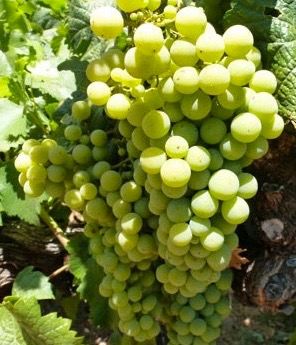
Flight 21 2013 Failla Chuy Vineyard Sonoma Valley Chardonnay 13.7% alc., $60, cork. RG: This wine offers plenty of California fruit richness with full-on aromas and flavors of lemon, butter and oak. Outrageous mid palate lemon exuberance with noticeable but not intrusive oak input, and impressive citrus intensity and length on the finish. Much better when tasted the following day. 92. DL: This was the first wine that seemed to have an excess of dissolved carbon dioxide giving it a pleasant spritz that helped show its fine citrus fruits. 2 2013 Evening Land Vineyards Summum Eola-Amity Hills Willamette Valley Chardonnay 13.4% alc., cork. Evening Land recently released individual bottles of this wine that was originally released as part of the Reserve Case Allocation. Sourced from a minuscule parcel of 14 rock-strewn vine rows. The producer claims “the finest white wine in Seven Springs’ history. RG: A complex wine that is beautifully composed. Aromas of peeled apple, toasted brioche, butter and spice lead off. A bit of flint blows off over time. Discreetly rich flavors of lemon, Asian pear and Fiji apple with a compliment of nutty oak. The lemon-scented finish offered good length. A very agreeable wine that walks the line between the richness of many California Chardonnays and the more austere style of some of the Australian wines in this tasting. Noticeably more aromatic and expressive on the palate with tightly drawn acidity when tasted the following day. 93. DL: Lovely citrus fruit but I found the oak a little over done as it showed high vanilla that overwhelmed the citrus fruit. 3 2013 Hyde & Sons Carneros Chardonnay 14.4% alc., $55, cork. RG: Unfortunately, this bottle had oxidized (acetone) aromas dominating the nose that persisted the following day. More enjoyable on the palate, with rich, ripe flavors of nectarine, apple, spice, caramel and seared marshmallow, but the fruit tasted slightly oxidized. Unchanged when tasted the following day. Not scored. DL: High acid with lovely citrus and what I suspect was spice from oak. I wondered whether it was a non-malo style made from over ripe grapes. 4 2014 Chappellet Napa Valley Chardonnay 14.5% alc., $24, cork. RG: Highly enticing nose with clean, fresh aromas of lemon, salt air and metal. Slightly viscous in the mouth and strikingly flavorful with tastes of lemon, apple and pear. Well composed, with enough energetic acidity to please. Unchanged when tasted the following day. 93. DL: Big but with balance and charm. I was shocked to find it had 14.5% alcohol, yet on my notes I used words like balance and hitting the sweet spot of flavors balanced with alcohol. 5 2014 Domaine Christian Moreau Valmur Grand Cru Chablis France 11%-14% (13%), Diam cork. Imported by Kirkcrest Imports, Danville, CA. RG: Restrained aromas of lemon, apple, pine, smoke and flint. A bit tight and unflattering at this stage, with a core of juicy lemon flavor. Sleek and rounded with good cut and persistence on the finish. This wine was better when tasted the following day and will undoubtedly benefit from several years in the cellar. 93. DL: I thought this wine was the Hollyman because it had lovely grapefruit with purity and great length. When it was revealed as the Chablis, I wasn’t surprised. 6 2015 Tyrell’s Wines HVD Vineyard Old Vine Hunter Valley New South Wales Australia Chardonnay 12.5% alc., 500 cases, screwcap. Sandy, free-draining soils. Extended lees contact, fined. Oldest producing Chardonnay vines in the world dating to 1908. RG: On initial examination, this wine had a shallow nose and was very austere. When tasted the following day, it had blossomed into a gorgeous wine of great complexity. This wine was highly distinctive and unlike any other wine in the tasting. The combination of aromas of earth, minerals, mushroom, saline and lemon-lime was intriguing. The citrus-driven fruit was lifted by a complimentary thread of citric acidity that brought the wine to life and enthused the finish. The wine’s mouthfeel was not only slightly creamy but the wine had a hint of cream flavor. I am not certain that this wine would appeal to the American palate, but I found it to be of great interest. 94. DL: A similar spice character on both nose and palate that I saw in the Hyde & Sons. Lovely balance but the vanilla kick suggests a little too much oak.
According to James Halliday, Chardonnay started its Australia-wide reign when the late Murray Tyrell produced the 1971 Vat 47 Pinot Chardonnay. Tyrrell’s was established in 1858 and now directed by son Bruce. Most Lower Hunter wineries today produce a Chardonnay, some are richer, more oaky than others, but all with a peaches-with-cream cast to their make up. By and large, they develop quickly.
7 2013 Wayfarer Sonoma Coast Chardonnay 14.5% alc., cork. RG: Well-endowed with aromas of lemon cream pie, Asian pear, and brioche. Highly flavorful, with a remarkably vivid lemon core augmented by a touch of spice and nectarine. Noticeably fullness on the palate with a purposeful finish that has the right amount of cut to leave behind an impression. I have reviewed this wine previously and found it to be striking. Significantly more appealing when tasted the following day. 96. DL: Another Dolly Parton wine with 4+ oak. It was much better when tasted with cheese. 8 2015 Giant Steps Tarraford Vineyard Yarra Valley Australia Chardonnay 13.5% alc., 450 cases, screwcap. Vines planted in 1988 in sandy clay loam. No malolactic fermentation. RG: Delicate but pleasing aromas of lemon, grapefruit, iron and brioche set the stage. In the mouth, the flavors of pear, green apple and melon reach out for attention. Very charming mouthfeel with impeccable balance. Chardonnay unplugged with no oak amplification. More expressive on the nose and palate when tasted the following day. 95. DL: This wine had a spritz kick in a style similar to the Failla. Love its elegant clean fruit and balance. The oak and fruit were in harmony and it was very chuggable.
According to James Halliday the quality and range of style of Yarra Valley Chardonnay has increased dramatically since the 1990s, while there is a distinctive regional melon/fig/white peach flavo r substrate to all Yarra Valley Chardonnays. There is tremendous diversity in weight, texture and richness, partly reflecting vintage variation and partly the different winemaking philosophies and techniques. What is undoubted is the capacity of the Yarra Valley to produce long-lived Chardonnay of the highest quality .
RG: I believe I prefer more unctuous, somewhat oaked, stone fruit driven, full malo Chardonnays, at least if I am tasting or drinking the wines alone. With food, it would be a different story. David, on the other hand, like many Aussies, prefers more acid-driven, leaner styles of Chardonnay, yet ones with enough fruit to balance the acid. There is no remarkable takeaway from this smack down other than to say that great Chardonnay is currently being produced all over the world in a number of different styles and we should revel in our good fortune. DL: If I was pushed to give my top three, I would say Giant Steps Tarraford, Chablis, and Peirson-Meyer, closely followed by Wendy, Evening Land, Failla and Hyde. My least enjoyed were the Neudorf and Wayfarer. A ripper of an evening and thanks so much to Rusty and Patti for going to such a huge effort to get it all together, especially the washing and drying of 56 glasses. There is one unavoidable conclusion: great Chardonnay does not have to be French for it can come in a range of styles and can be great whether from California, Oregon, Chablis, New Zealand or Australia. I left my favorite white Cote d’Or Burgundy out of the tasting because at the silly price points and high frequency of white Burgundy wine suffering cork related issues the risk was to high to justify buying much of it. The photo below, taken in June 2015 in Chablis, shows David (blue vest) standing next to Christian Moreau on one side and David’s companion Carol, an Australian veterinarian on the other side. Next to Christian is Cyndi Henderson, an anesthesiologist from Vancouver.
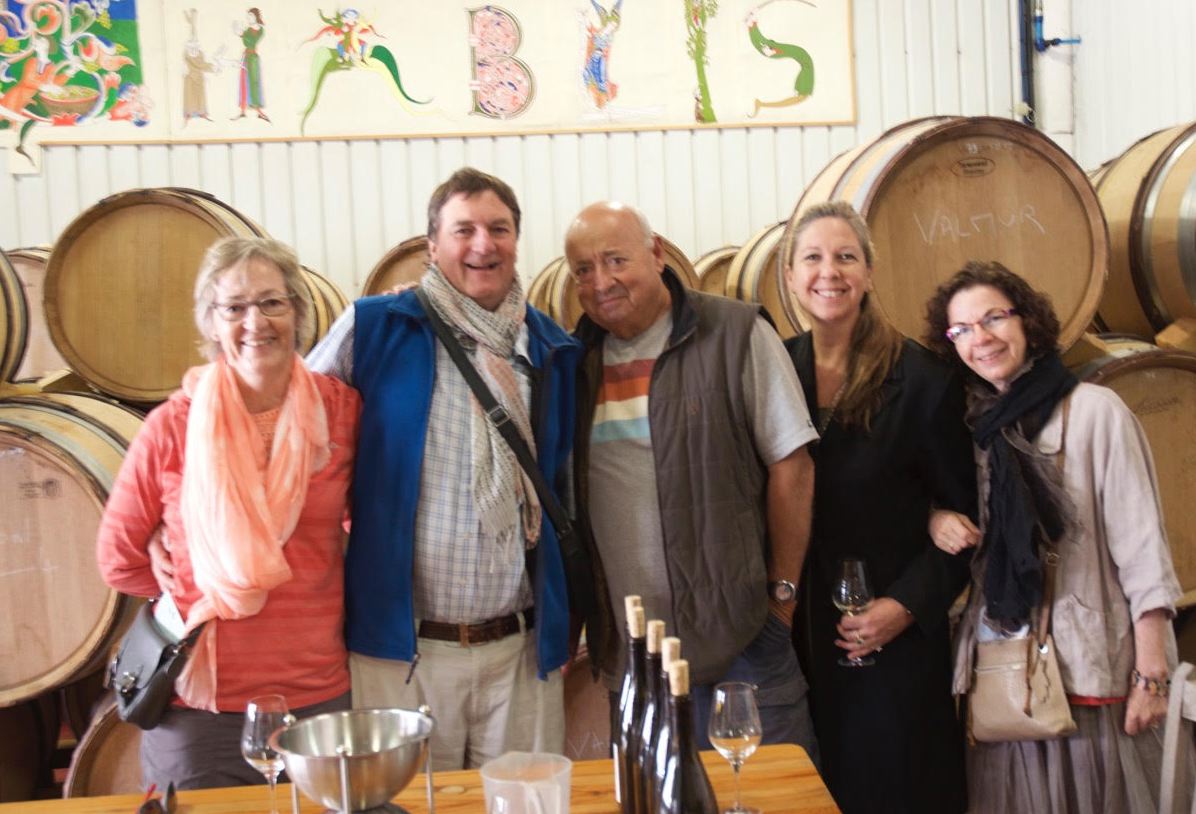
2015 Kutch Pinot NoirI have written extensively about the journey of Jamie Kutch from a novice winemaker to a current producer of ultra premium Pinot Noir of the highest regard. In his 2017 Spring Release Letter, Jamie noted that the quality of the 2015 Pinot Noirs “was astonishing even with the diminished yields.” He reported the earliest and shortest harvest on record. Yields ended up down 40% overall versus the winery’s historic averages and at McDougall Ranch, yields were down over 60%. Jamie claimed, “2015 is truly distinct in character and will hold its own among the so called ‘great’ vintages we have experienced.” After making a number of inquiries for several years, Jamie was able to acquire some coveted Pinot Noir fruit from Signal Ridge Vineyard in the Mendocino Ridge AVA. This vineyard is planted at the highest elevation of all Sonoma and Mendocino County vineyards at 2,800 feet. There are just 17 acres planted (see photo below).
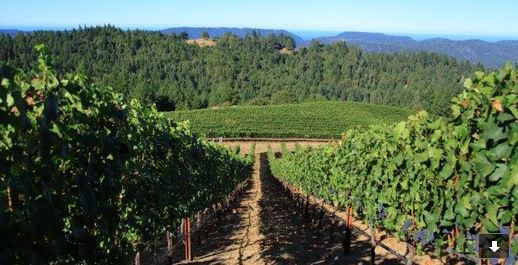 The superb Pinot Noirs in this vintage exhibited true vintage character. The wines were less extracted than the same wines in 2014, and although fermented 100% whole cluster, the whole cluster character was well integrated, adding nuance and texture without being the dominant feature of the wines. I asked Jame to comment on my observations. “The low yields had a big influence on the chemistry, intensity, character and quality of the wines. Because yields were down so much and because there were so few grapes on each cluster, we chose to perform extra gentle extraction so as to not over extract what I believed was an ultra intense vintage. We did not cold soak and punched down far less than in previous vintages. We also got the juice off the skins as early as we could. The implications were that the wines had less whole cluster character even though they were vinified with 100% whole cluster inclusion. In very intense vintages where there is very little juice in the berries and in relation large amounts of skin, logic would say to under extract as the fruit and juice is already so intense. This is what we set out to accomplish. It was the correct decision in striving to make the most balanced expression of Pinot Noir we can from the sites we work so closely with.” The wines all showed gorgeous color, enviable vibrancy and admirable balance. They are enjoyable now, but still need more time in the cellar to fully integrate tannins and reach ideal harmony. The wines were better and better over several days after opening. The tannins add textural interest rather than astringency. One of the best things you can say about the wines is that the fruit is not over ripe. The wines are sold through a mailing list. Tastings are available by appointment: email tastings@kutchwines.com.
2015 Kutch Sonoma Coast Pinot Noir 12.9% alc., 750 cases, $39. Sourced from two distinct vineyards representing the extreme northwestern edge of the AVA and the southernmost tip of the AVA. 3-day lag time, 100% whole cluster, fruit crushed and punched down by feet, native yeast primary fermentation and native malolactic fermentation in barrel, aged 17 months in the lees in neutral French oak barrels without racking. Bottled unfined and unfiltered. · Moderate reddish purple color in the glass. More fruity nose upon opening with aromas of tutti-fruity, cherry, rose petal and spice, evolving to a more savory aromatic profile over time. The mid weight core of lovely black cherry and black raspberry fruit is accented with cardamom spice and a floral infusion. Satiny in texture with a somewhat sinewy tannic backbone, the wine finishes with a noticeable grip of tannin. Unchanged when tasted the following day from a previously opened and re-corked bottle. Score: 89
2015 Kutch Bohan Vineyard Sonoma Coast Pinot Noir 12.46% alc., 125 cases, $49. George Bohan farms the original vines his father planted 40+ years ago. The original plantings are dry farmed and on their own rootstock. Soil is sandstone. 3-day lag time, all fruit crushed and punched down by foot, native yeast primary fermentation and native malolactic fermentation in barrel, aged 17 months on the lees in French oak barrels, 25% new. · Moderate reddish purple color in the glass. An impressive terroir-driven wine that leads with attractive aromas of strawberry, cherry, mushroom, sous-bois, spice and floral notes. A bit rustic and earthy, while still offering a delightful array of dark red fruits. The sinewy tannins are in harmony with the wine’s juicy acidity as part of impeccable balance. The silky texture is dreamy as is the elegant demeanor. The best thing you can say about this wine is that you want to keep on drinking it. Stunning when tasted four days later. Score: 95
2015 Kutch Falstaff Vineyard Sonoma Coast Pinot Noir 12.3% alc., 250 cases, $62. Vineyard is located at the extreme western edge of the AVA, 8.4 miles from the Pacific Ocean on the second inland ridge. The vineyard, planted in 2001, is the coldest site Kutch works with. Clones “828,” 777 and 115. Soil is marine quartz sandstone and Goldridge. Berries are often the size of peas and yields are often below 1 ton per acre. 3-day lag time, fruit crushed and punched down by foot, 100% whole cluster, native yeast primary fermentation and native malolactic fermentation, aged for 17 months on the lees in 100% neutral French oak without racking. Bottled unfined and unfiltered. · Moderately dark reddish purple color in the glass. The nose is quite alluring, with fruit (black cherry, ollaliberry, exotic spice, floral and savory (wet mulch, underbrush) aromas. A generous charge of black cherry, black raspberry and blackberry fruit flavors flood the mouth with pleasure framed by supportive tannins. The most sappy wine in the 2015 lineup, although the natural acidity offsets and offers vibrancy and even a bit of tartness on the finish. The wine enters better than it finishes, but when tasted the following day from a previously opened and re-corked bottle, the finish was more lingering and further time in the bottle should righten this shortcoming. Score: 92
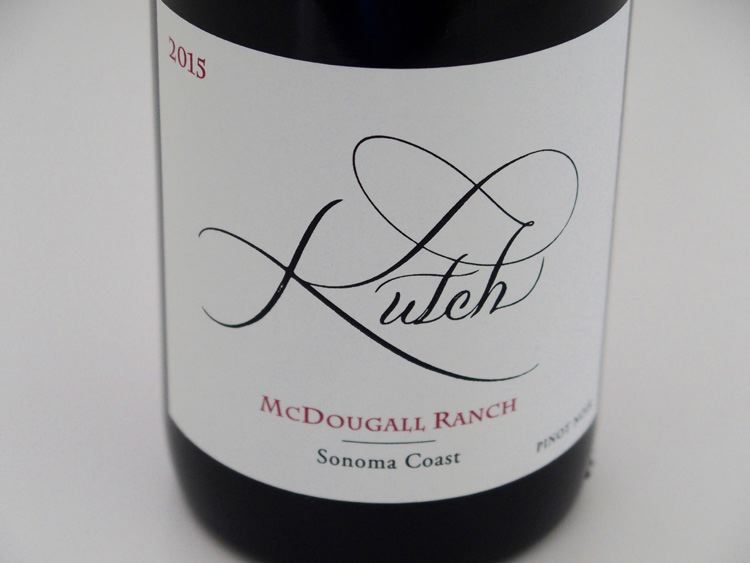 2015 Kutch McDougall Ranch Sonoma Coast Pinot Noir 12.78% alc., 350 cases, $59. This vineyard is a mere 3.5 miles inland from the Pacific Ocean at 935 feet elevation. Farming is directed by Ulises Valdez. Planted in 1998 to clone 114 in Graywacke and sandstone soil. 3-day lag time, fruit crushed and punched down by foot, 100% whole cluster, native yeast primary fermentation and native malolactic fermentation in barrel, aged on the lees for 17 months without racking in neutral French oak barrels. · Moderately dark reddish purple color in the glass. Enticing aromas of cherry, rose petal and spice are echoed in the teasing flavors that bring an uncommon goodness to play. The wine delivers a special experience from the attack, through the circus of fruit on the mid palate, and on the enduring finish that exceeds all the other wines in the 2015 lineup in length. There is a tug of tannin on the finish but this will ameliorate with more time in the bottle. When tasted the following day from a previously opened and re-corked bottle, the aromas of cherry, spice, rose petal and burnt tobacco were seductive and the infusion of whole cluster character into the fruit profile was orgasmic. Score: 96
2015 Kutch Signal Ridge Vineyard Mendocino Ridge Pinot Noir 13.1% alc., $52. 100% whole cluster, native yeast primary fermentation and native malolactic fermentation, aged 17 months in 100% neutral French oak barrels without racking. Bottled unfined and unfiltered. · Moderate reddish purple color in the glass. This wine shows that Jamie knows what to do when he gets special grapes, even though this is his inaugural effort from this vineyard. Haunting aromas of black cherry, blackberry, spice and brioche create a party in the nose. Fresh black cherry extract floods the mouth complimented with hints of oak and earth. The tannins are sturdy enough, but more modest in this wine. The striking finish has intense cherry goodness and impressive length. This wine is a real charmer and very approachable now. The wine still showed exceptional balance when tasted the following day from a previously opened and re-corked bottle indicating potential for longevity. Score: 94
Rivers-Marie: Past & PresentAs was the case for many California Pinot Noir producers in 2015, quantities at Rivers-Marie were tiny. Pinot Noir production was off 70% of early season projections. Owner and winemaker Thomas Rivers Brown said that the 2015 wines reminded him of his 2005 wines. “The concentration was unusually high that is only achieved by naturally occurring low yields. Weight without heaviness is the overreaching characteristic of the 2015 vintage. The shorter growing season allowed the fruit to retain plenty of natural acidity.” Allocations were tiny and if you were not on the mailing list, you won’t be able to acquire these wines. However, 2016 saw a return to normal for yields so there will be more wine available. Visit www.riversmarie.com to join the allocation list. I found the 2015 wines to be pumped up, highly concentrated wines with significant but deft barrel work. The wines are fruit driven and hedonistic in a plump and showy way with minimal savory aspects. They are technically sound, but at this early age, do not deliver as much charm and nuance as they undoubtedly will over time. Consider my scores conservative based on the youth of these wines. In addition to the wines reviewed here, in 2015 Rivers-Marie offered a Sonoma Coast Chardonnay (300 cases, partial malo, Joy Road, Thieriot, Riddle and Lucky Well vineyards), a Joy Road Vineyard Sonoma Coast Chardonnay (100 cases), B. Thieriot Vineyard Sonoma Coast Chardonnay (90 cases), Sonoma Coast Pinot Noir (450 cases, produced from almost every vineyard grapes are sourced from), and Summa Vineyard Sonoma Coast Pinot Noir (55 cases, 1 ton off of 3 acres, abysmal set). In 2016, Rivers-Marie added Platt Vineyard for both Chardonnay and Pinot Noir. Thomas has also entered into a lease agreement with Max and Lexi Thieriot to plant 5 acres of Pinot Noir on their new home site in Freestone, a location where several high profile vineyards dot the surrounding hillsides. The first fruit from this new vineyard will be available in 2019 or 2020. I reached into my cellar to taste a few older bottles of Rivers-Marie Pinot Noir that have been impeccably stored. I have found that many readers are interested in reviews of older California Pinot Noirs since there is very little of this information available in the wine press.
 2015 Rivers-Marie Kanzler Vineyard Sonoma Coast Pinot Noir 14.3% alc., 130 cases, $50. The last vintage of Kanzler Vineyard as the family is retaining a little more of their estate fruit to help build their own label. Whole cluster percentage was increased to balance the abundant dark fruit. · Moderate reddish purple color in the glass. Aromas of black cherry, grape pomice, spice and nutty oak are attractive. Rather luscious and bold mid weight plus flavors of blueberry, boysenberry, black berry, plum and spice are underlain with noticeable barrel work. Good natural acidity provides vibrancy, the fruit tannins are well integrated, and the finish is soothing. This wine developed more Pinot grace over time in the glass. Score: 93
2015 Rivers-Marie Occidental Ridge Vineyard Sonoma Coast Pinot Noir 14.2% alc., 110 cases, $50. · Dark reddish purple color in the glass. The nose is rather muted and primary, offering delicate aromas of ripe dark fruits and spice. Extremely sappy in a kinky way, but not jammy, with a full-bodied core of sweet, teeth-staining ollaliberry and blackberry goodness. Noticeable, but engaging tannins, enough natural acidity for juiciness, with an intensely fruity and explosive finish. Typical of this vineyard (see tasting of older vintages) but with heightened concentration in this vintage. Score: 92
2015 Rivers-Marie Silver Eagle Vineyard Sonoma Coast Pinot Noir 14.1% alc., 200 cases, $50. Vineyard is farmed by Ulises Valdez. Primarily Vosne-Romanee and Calera clones. Some added whole cluster in this vintage. · Moderately dark reddish purple color in the glass. The nose is largely oak-driven with aromas of coffee and roasted nuts initially, slowly revealing black fruit flavors. Rich and sappy in the mouth, with flavors of blackberry, cassis and Hoison sauce with a noticeable play of oak in the background. Fruit driven, with nicely balanced tannins, and a pleasing but not extraordinary finish. Little nuance, but offers an irresistible opulence. Score: 92
2015 Rivers-Marie Bearwallow Vineyard Anderson Valley Pinot Noir 14.2% alc., 120 cases, $60. Located in the deep end of the Anderson Valley and sourced from blocks planted by owner Kevin Harvey of Rhys Vineyards. · Moderately dark reddish purple color in the glass. This wine is quite tight both on the nose and palate and reveals the most tannin of the 2015 wines tasted here. There is some tasteful purple and black fruit trying to emerge, but the oak and tannin dominate. Considerably better when tasted two days later from a previously opened and re-corked bottle, with a more engaging perfume and better tannin integration and harmony. Score this one largely on future potential. Score: 91
2015 Rivers-Marie Summa Old Vines Sonoma Coast Pinot Noir 13.3% alc., 70 cases, $75. 1.25 tons off of 1.75 acres. Aged in 100% new French oak barrels. · Moderately dark reddish purple color in the glass. The nose is initially replete with aromas of woodland, smoke, smoldering embers, grilled mushroom and spice, presumably due to 100% new oak still relatively soon after bottling. When tasted two days later from a previously opened and re-corked bottle, the oak was more subdued and the sexy fruit aromas were beginning to arrive. Much better on the palate with a mid weight core of charming black cherry and black raspberry flavors. Very silky in the mouth, with gentle tannins. Not as sappy as the other 2015 Rivers-Marie wines and thereby more sophisticated and alluring. This wine definitely needs a few years in the cellar and will reward your patience. It will turn out to be the best wine in the 2015 lineup. Score: 94
Older vintages follow.
2008 Rivers-Marie Sonoma Coast Pinot Noir 14.1% alc.. · Dark reddish purple color in the glass. Upon opening, aromas of blackberry jam and cassis leap out of the glass, replaced with time by aromas of old leather, wet earth, spice, barrique and mulch. Mid weight plus flavors of blackberry, anise and charcoal grill, what I call “Pinot over the coals.” Mild chalky tannins and a decent finish. This wine will appeal to those who like aged domestic Pinot Noir. Drink up. Score: 87
2009 Rivers-Marie Sonoma Coast Pinot Noir 14.1% alc.. · Dark reddish purple color in the glass. Leading off are scents of blackberry jam and oak char. Sappy black fruits saturate the palate but there isn’t much else to note. The tannins are soft, the texture is plush, and the finish is filled with fruit and a hint of nutty oak. Drink now to 2020. Score: 85
2008 Rivers-Marie Occidental Ridge Vineyard Sonoma Coast Pinot Noir 14.1% alc.. · Gorgeous deep reddish purple color with some thinning of color on the rim. Aromas of black cherry, dusty rose. wood spice and sweaty saddle leather (? Brett). Impressive freshness on the palate, with a charge of opulent black cherry and purple berry fruits accented with cake spice and a subtle infusion of oak. Diaphanous tannins with a lingering, sweet fruited finish. Drink now to 2020. Score: 90
2010 Rivers-Marie Occidental Ridge Vineyard Sonoma Coast Pinot Noir 14.1% alc.. · Dark reddish purple color in the glass. Aromas of black raspberry, fig, tobacco smoke and oak rise up from the glass. Concentrated flavors of sweet dark berry and plum with immersed tannins. Still young, without significant tertiary characters, a pleasingly silky mouthfeel, and a well-endowed finish filled with copious sweet fruit. Drink now to 2022+. Score: 92
2004 Rivers-Marie Summa Vineyard Sonoma Coast Pinot Noir 14.1% alc.. · Dark reddish purple with slight yellowing of rim in the glass. Tertiary bouquet of earth, mulch and toast woven together with fruit input. Still retains some dark strawberry and black cherry fruit flavors that are hanging in there. The dry tannins are well integrated and there is some length to the dry, cherry finish. Really quite nice for a 13-year-old Pinot. Drink up. Score: 90
2008 Rivers-Marie Summa Vineyard Sonoma Coast Pinot Noir 14.1% alc.. · Moderately dark reddish purple color in the glass. Off aromas of root beer, medicine cabinet and oxidative notes. The mid weight core of black fruits has noticeable nutty and toasty oak support. There is a hint of rubber that spoils the experience. Flawed. Not rated.
2010 Rivers-Marie Summa Vineyard Sonoma Coast Pinot Noir 13.8% alc.. · Dark reddish purple color with slight yellowing of the rim in the glass. Aromas of oak, leather saddle, soot and floral bouquet lead to mid weight plus flavors of blackberry, black raspberry, olive and toast. Plush in the mouth, with a good attack but less impressive finish. Unchanged when tasted the following day. Drink up to 2020. Score: 87
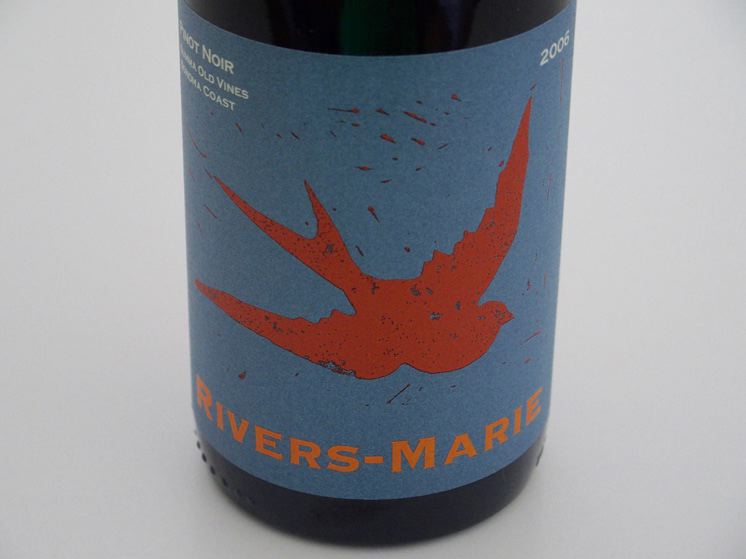 2006 Rivers-Marie Summa Old Vines Sonoma Coast Pinot Noir 14.2% alc.. · Light cherry red color withsome yellowing of the rim in the glass. Lovely bouquet of dried cherry, tinder box, pipe smoke, old leather and walnuts. Light to modest in weight with fading fruit flavors of dried black raspberry and blackberry with a hint of vanilla. Gossamer tannins with bright acidity and an uplifting finish. A tired warrior that still offers charm. Drink up. Score: 92
2008 Rivers-Marie Summa Old Vines Sonoma Coast Pinot Noir 14.1% alc.. · Moderate reddish purple color with slight yellowing of the rim in the glass. Robust aromas of black cherry, blackberry, cassis, rose petal and hazelnut with a slight oxidative note. Rather bold with a copious core of very ripe cherry and berry fruits and a subtle riff of smoke taint in the background. Still giving of plenty of fruit, but offering little tertiary character. Drink now to 2020. Score: 89
WesMar Winery Celebrates 15th VintageIn the fall of 2017, WesMar Winery (pronounced “Wes-Mare”) will be releasing its 15th vintage, When I began the PinotFile in 2002, WesMar was one of my first featured wineries. Kirk Wesley Hubbard and Denise Mary Selyem left their corporate world jobs in the early 1990s upon the urgings of Denise’s father, Ed Selyem, and joined Williams Selyem Winery. Wile working there, they learned the wine business and the secrets of producing great Pinot Noir. When Williams Selyem Winery was sold in 1997, Kirk and Denise launched their own winery in the mold of the Williams Selyem garagiste model.
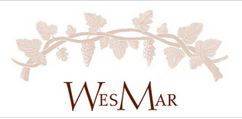 Their winery is located in a former apple processing facility on Gravenstein Highway in Sebastopol. There is no fancy sign calling attention to the winery, just some grape bins outside with the name “WesMar” stenciled on them. The winery is strictly a two-person operation, with Kirk and Denise sharing all winemaking and winery management duties without the assistance of employees, consultants or brokers. Both appellation-designated and vineyard-designated Pinot Noir are produced, with each wine vinified in an identical fashion. The wines are vinified in five-ton, double-walled, rectangular open-stop, stainless steel, former milk shipping containers that maximize surface area relative to height and weight. These halved containers were originally used by Burt Williams and Ed Selyem when they owned the Williams Selyem Winery. There is usually an inclusion of a modest amount of whole cluster. Punch downs are by hand, the winemaking process is by gravity flow only using no pumps, and aging is carried out in a generous proportion of new Francois Frères oak barrels for about 11 months. The wines are usually bottled unfined and unfiltered. In 2012, the first two acres of an estate vineyard were planted in Sebastopol using Pommard and Martini clones, but subsequent replanting was required so the 2018 vintage will be the first usable harvest. The 2014 vintage wines reviewed here were the result of a warm and dry period during flowering set, moderate conditions throughout June and July, August cooling that slowed fruit maturity, and harvest with lower sugars in the range of 23.0º to 23.9º Brix. Denise says, “The 2014 Pinot Noirs are expressive even at a young age. These are some of the most balanced wines we have produced among recent vintages dating back to 2007. The harmony the wines offer along with higher acidities and low alcohol levels will allow the wines to age wonderfully.” WesMar wines are sold through a mailing list and the winery’s online website store at www.wesmarwinery.com. Visitors are welcomed with open arms by appointment (707-829-8886). The 2014 wines were released in the spring 2017. Magnums and Jeroboams are available. A Chardonnay was also offered from the 2014 vintage. As Denise noted, the wines are quite expressive now and when tasted the following day from a previously opened and re-corked bottle, they continued to shine, predicting age ability.
2014 WesMar Russian River Valley Pinot Noir 14.1% alc., 175 cases, $40. A blend of grapes from Oehlman, Balletto and Salzgeber vineyards meant to reflect the vintage in the RRV AVA. · Moderately light reddish purple color in the glass. Aromatically pleasing with scents of Bing cherry, spice, cola and sandalwood. Light to mid weight in style, with a juicy core of black cherry fruit set off by complimentary oak spice and cola notes. Easy to cozy up to, with silky tannins and admirable balance. Score: 90
2014 WesMar Oehlman Vineyard Russian River Valley Pinot Noir 13.9% alc., 175 cases, $42. 11.92 acres on Vine Hill Road in Sebastopol. Goldridge soil. · Moderate reddish purple color in the glass. Lively red and purple berry aromas as well as a bit of barnyard that may or may not appeal. Much better on the palate, with forward mid weight flavors of cherry, raspberry, spice, brewed tea and cola. Silky tannins and juicy acidity work amicably in tandem, and the wine finishes pleasantly albeit modestly. Score: 88
2014 WesMar Balletto Vineyard Russian River Valley Pinot Noir 13.9% alc., 175 cases, $42. · Moderate reddish purple color in the glass. Enticing perfume of dark berry, allspice, burnt tobacco and subtle oak. Very satisfying on the palate, with a discreetly concentrated core of blackberry and black raspberry fruits complimented with spice and oak in the background. Noticeable structure and intent, with sleek tannins and finishing with both power and length. Score: 92
2014 WesMar Salzgeber Vineyard Russian River Valley Pinot Noir 14.4% alc., 150 cases, $45. · Moderately dark reddish purple color in the glass. Soaring aromas of cherry, raspberry, and vanilla lead to an assertive middleweight palate replete with beautifully ripened black cherry fruit. Impressive attack, mid palate presence and finish, with polished tannins, and deft oak enhancement. Score: 92
2014 WesMar Sonoma Coast Pinot Noir 14.4% alc., 250 cases, $40. A blend of grapes from Hellenthal and Balletto vineyards. · Moderately light reddish purple color in the glass. The aromas arrive slowly in the glass, but peaking with interest as notes of purple and black berries, mulch, earth and underbrush show up. An array of earth-kissed purple berry and plum flavors are offered in a mid weight plus style. Very savory and earthbound, with only a hint of nutty oak. Highly engaging mouthfeel, with some finishing generosity. Score: 91
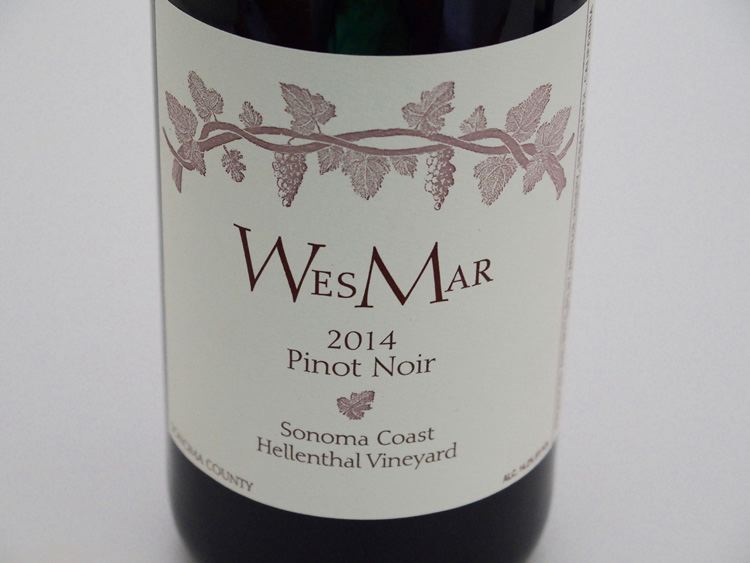 2014 WesMar Hellenthal Vineyard Sonoma Coast Pinot Noir 14.2% alc., 200 cases, $50. 14.66 acres located on Bohan Dillon Road in Cazadero in the Fort Ross-Seaview AVA. Vineyard has three interplanted clones planted at 1053 feet elevation. · Moderately dark reddish purple color in the glass. The nose is primary, even when checked the following day. More expressive on the palate, with opulent flavors of blackberry and boysenberry, as well as iron and earth. Good harmony, with slick tannins and power to spare on the finish. A bit of an enigma now, this wine will need more time in the cellar to unleash its aromatics and nuances, but its nobility is evident. Score: 92-93
Seal Beach WineryBeing a retired physician, I am always intrigued when I discover a winery run by a doctor who has also become a winemaker, especially when the winery is named after a small beach town located only a modest number of miles from my home. Michael Dawson, M.D., is a clinician who followed his passion for wine. He studied enology and viticulture at University of California at Davis after working in clinical medicine as a radiologist. His undergraduate degree in biochemistry and cell biology from University of California at San Diego gave him the basis for understanding the biology and chemistry of winemaking. Michael began with small lots of Pinot Noir, Chardonnay and Cabernet Sauvignon from the Santa Ynez Valley in an attempt to arrive at a preferred style. Currently, he crafts multiple varietals out of a winery facility in Seal Beach, California. Small lot boutique wines are designated as Natalie Grace and Taylor Noelle on the labels. A tasting room is located in Los Alamitos, California, east of Long Beach, and the wines are sold online at www.sealbeachwinery.com.
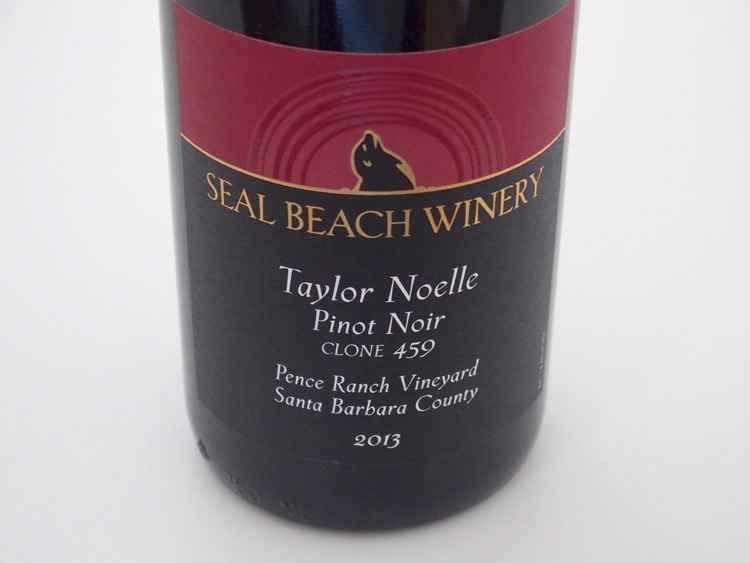 2013 Seal Beach Winery Taylor Noelle Clone 459 Pence Ranch Vineyard Santa Barbara County Pinot Noir 14.5% alc., pH 3.60, TA 0.61, 143 cases, $32. Harvest Brix 26.5º. Native yeast fermentation. Aged 20 months in French oak barrels, 50% new and 50% 3-years-old. · Light cherry red color with an orange caste. Slight reduction upon opening, progressing to appealing aromas of cherry, sandalwood, spice and nutty oak. Discreetly concentrated cherry and cranberry fruit flavors in a bright and rather delicate style with hints of citrus, white chocolate, sarsaparilla and tobacco that come and go. There is a good natural acid spine with minimal tannins making for refreshing drinking. Oak definitely plays a role but is mellow and not drying. Interestingly, this wine has somewhat the patina and flavor of an older wine. Better when tasted the following day from a previously opened and re-corked bottle with more harmony and exuberance. Score: 90
2014 Seal Beach Winery Reserve Sta. Rita Hills Pinot Noir 14.5% alc., pH 3.46, TA 0.64, 200 cases, $35. Sourced from Kessler-Haak and Rio Vista vineyards. Clones 667, 115 and 2A. Harvest Brix 28.0º. Aged 26 months in French oak barrels, 30% new. · Moderately light cherry red color with a slight orange caste. The nose is quite primal and savory, with aromas of mushroom, undergrowth, pennyroyal and shy cherry fruit. Light to mid weight in style, with inviting flavors of cherry, baking spices, cola and sarsaparilla. Silky tannins and graceful in texture, with reserve quality length and intensity on the finish. This wine is not overblown like many reserve designated wines. Score: 90
2013 Seal Beach Winery ‘Old Vine’ Wolff Vineyard Edna Valley Chardonnay 13.5% alc., $21. Many vines are more than 75 years old. Native yeast fermentation in neutral French oak barrels, 100% malolactic fermentation. Aged 21 months in French oak barrels, 40% new medium + toast. · Moderate golden yellow color in the glass. The nose has a bit of leesy aroma along with lemon creme and chalk. Crisp and refreshing with a slightly creamy mouthfeel, offering a variety of citrus fruit flavors along with spiced apple and subtle oak notes. Very giving, even over time in the glass. A terrific wine that belies the price. Score: 92
Recent Sips of California Pinot Noir
Freeman Vineyard & Winery, Sebastopol, CAKen and Akiko Freeman began their winery in 2001, offering appellation-designated and vineyard-designated Pinot Noirs from Russian River Valley and Sonoma Coast vineyards that were crafted by veteran winemaker Ed Kurtzman. Ed eventually passed the winemaking duties to Akiko and assumed a consulting posture. This is one of the most charming wineries in the Russian River Valley to visit, with the winery and barrel caves built into a hillside in western Sebastopol. In 2007, the Freemans added a 4-acre estate vineyard (Gloria) located on a steep hillside behind the winery. The Yu-ki Estate Vineyard on the Sonoma Coast has been planted over the past seven years and produced its first crop in 2014. The wines have been consistently superb and are sold primarily through a mailing list at www.freemanwinery.com. As I have noted previously, the 2014 vintage was a drought year in the North Coast, with a warm winter causing an early start to bud break. For the most part, the crop had a good set and the warm summer led to one of the earliest harvests on record. The quality of the wines in this vintage were very high.
2014 Freeman Russian River Valley Pinot Noir 13.8% alc., 1,008 cases, $44. The largest part of this wine comes from the winery’s Gloria Estate Vineyard and includes all five clones planted there (Calera, Pommard, Martini, Swan and 115). There were also contributions from Thorn Ridge Vineyard (Swan clone) and Sexton Vineyard (clone 2A). Only a few barrels of Keefer Ranch contributed due to low yields in that vineyard. 5-day cold soak in open-top fermenters, hand punch downs, free run juice sent directly to barrel, press wine barreled separately. Aged 11 months in French oak barrels, 25% new. · Light cherry red color in the glass. Complex nose that builds over time in the glass offering aromas of cherry cola, blueberry, sous-bois, baking spices, grape must and timber. Cherry driven with accents of oak and spice and nicely composed with balanced tannins and modest finishing power. Rather elegant and aims to please in a typical Russian River Valley style. Score: 89
2014 Freeman Sonoma Coast Pinot Noir 14.1% alc., 1,002 cases, $45. The largest contribution to this wine came from Rayhill Vineyard (115 and 777), with small amounts of grapes from Campbell Ranch (777), and the very young Yu-ki Estate Vineyard located just five miles from the Pacific Ocean at 1,000 feet elevation (114, 667, “828,” 2A and Mariafeld). 5-day cold soak in open-top fermenters, hand punch downs, free run juice directly to barrel, press wine barreled separately. Aged 11 months in French oak barrels, 22% new. · Light cherry red color in the glass. Aromas of black cherry, blueberry, Damsel plum and amphora lead to mid weight flavors of earthy cherry that make an impression. A bit of nutty oak shadows the fruit, the tannins are chalky and supportive, and the finish ends with appealing savory and juicy fruit notes. Score: 90
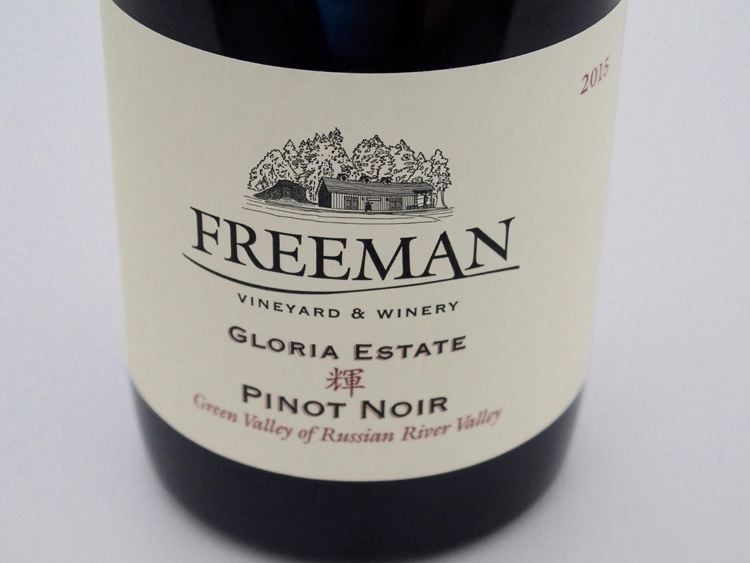 2015 Freeman Gloria Estate Vineyard Green Valley of Russian River Valley Pinot Noir 13.8% alc., 333 cases, $62. Five clones (Swan, Calera, Martini, Pommard and Dijon 115) planted in Goldridge soil and sustainably farmed. Vineyard named after Hurricane Gloria that first brought Ken and Akiko Freeman together in 1985. Very low yields in 2015 due to cool weather during flowering in May. Uneven set and tiny clusters only yielded six tons of fruit from 8 acres. 5-day cold soak in open-top fermenters, hand punch downs, free run sent directly to barrel, press wine barreled separately. Aged 11 months in French oak barrels, 12% new. · Moderately dark reddish purple color in the glass. A nose with purpose, that opens nicely with swirling, revealing aromas of dark raspberry, spice and sous-bois. Very charming and silky in the mouth with vivid flavors of black cherry and purple berry fruits underlain with a thread of savory herbs. Expansive and layered in the mouth, with nice harmony and a gentle demeanor. Much better when tasted the following day from a previously opened and re-corked bottle. Score: 93
Fulcrum Wines, Sonoma, CAI have followed owner and winemaker David Rossi’s Fulcrum wines since the 2006 vintage (the winery was launched in 2005) and the wines have become progressively better with each vintage. I am not crazy about his black labels with gold print that are hard to read and photograph, but the wines are unquestionably superb. The name, Fulcrum, refers to the point on which an object balances, a name chosen years before balance became the center of discussion about New World Pinot Noir. The wines are produced in limited quantities from premium vineyards in the Anderson Valley, Russian River Valley, Sonoma Coast, Carneros and Chalone appellations. The wines are sold through a mailing list at www.fulcrumwines.com, and can be tasted daily at the winery’s tasting room just off the historic Sonoma Plaza at 25 E. Napa St.. David’s first Chardonnay from Durell Vineyard in 2015 will be reviewed elsewhere.
2015 Fulcrum Brosseau Vineyard Chalone AVA Pinot Noir 14.1% alc.,103 cases, $60. Clones 113, 114, 115 and Mt. Eden. Aged 11 months in French oak barrels, 40% new. Bottled unfined and unfiltered. · Moderately dark reddish purple color in the glass. Enviable aromas of dusty black cherry, earth, stone and iron are followed on the palate by mid weight flavors of fresh black cherry and red currant with an earthy thread in the background. Graceful tannins, impeccable balance and a purposeful finish replete with cherry aroma. Still superb when tasted the following day from a previously opened and re-corked bottle indicating potential for longevity. Score: 93
 2015 Fulcrum Gap’s Crown Vineyard Sonoma Coast Pinot Noir 14.3% alc., 235 cases, $65. Clones “828” and 667. Aged 11 months in French oak barrels, 50% new. Bottled unfined and unfiltered. · Dark reddish purple color in the glass. The nose soars with intense aromas of black raspberry, blackberry, spice, violets and vanilla. Filled with glorious California fruit kissed by the sun, this mid weight plus beauty is polished and silky, with rich flavors of purple and black berries with a compliment of toasty oak in the background. Sappy, but not compotey, with balanced tannins, juicy natural acidity, and a generous finish that taps into the pleasure centers of the brain. A bit hedonistic, but true to character of this vineyard. Score: 94
More Wines
 2015 Birichino Saint Georges Central Coast Pinot Noir 13.0% alc., $24, screwcap. A blend of grapes from four diverse sitesAmbient yeast with a dollop of whole cluster. (20%) Aged in neutral oak and bottled unfiltered. · Light reddish purple color in the glass. Lovely aromas of cherry, red berry and sandalwood. Lighter styled, with bright flavors of strawberry and cherry composed in a charming fashion with easy tannins and no noticeable oak influence. This delightful wine offers great value and will satisfy your Pinot urges without the need for contemplation. Score: 90
2015 Sebastiani Robert’s Vineyard Carneros Sonoma County Pinot Noir 14.2% alc., pH 3.64, TA 0.55, 300 cases, $45 (sold out). Pommard (55%),115 (42%) and 32 (3%) clones. 100% de-stemmed, 3-day cold soak, pump overs 3 to 3 times a day with maceration lasting 11 to 13 days. Aged on light lees for 8 months in 72% new and 38% 1-year-old French oak barrels. · Moderately light cherry red color in the glass. Very magnetic nose, offering scents of cherry, rose petal, spice and seasoned oak. Bright and clean on the palate, with mid weight flavors of black cherry, black plum, blackberry and black tea complimented with a touch of oak. Highly enjoyable, with impressive harmony and a pleasing finish. Easily approachable now. Score: 93
2013 Stomping Girl Beresini Vineyard Carneros Pinot Noir 14.2% alc., pH 3.48, TA 0.54, 450 cases, $36. Released spring 2016. Vineyard planted and meticulously farmed by Steve Beresini in 1989. Calera, Pommard and Dijon 777 clones. Harvest Brix 24.4º. 100% de-stemmed, 3-day cold soak, aged 11 months in mostly neutral French oak barrels. Bottled unfined and unfiltered. · Moderate reddish purple color in the glass. The nose offers a profile of very ripe fruits including boysenberry, cassis and raisin, along with aromas of spice, toast and earthy flora. Robust on the palate, with a mid weight plus core of black cherry and purple berry fruits framed by firm but well-proportioned fruit tannins. Somewhat lush in mouthfeel with sap to spare, missing some vibrancy, but finishing with welcome intensity and length. Score: 89
Pinot BriefsAnderson Valley Pinot Noir Festival The weekend of May 20-21 is a popular one for Pinot Noir celebrations with events in the Santa Lucia Highlands, Silicon Valley and Anderson Valley. This year will be the twentieth annual Anderson Valley Pinot Noir Festival. A Technical Session will be held May 19, followed by the Grand Tasting under the tent at Goldeneye Winery on May 20, and winery open houses on May 21. Taste Pinot Noir produced by many of California’s finest vintners from grapes grown exclusively in Anderson Valley. For more information and tickets, visit www.avwines.com. I will be attending this festival so please introduce yourself if you are there.
 2017 International Pinot Noir Celebration Full-weekend registrations, July 28-30, 2017, are now 75% sold out. The Master of Ceremonies will be Allen Meadows, founder of Burghound.com, which is appropriate since this year’s theme is “The French Adventurers” Burgundiians Making Pinot Noir in Oregon. The moderator of the Grand Seminar is Eric Asimov of The New York Times and panelists will include several vignerons from Burgundy. Tickets for the Salmon Bake only will be available April 4. Visit www.ipnc.org for a list of participating wineries and to purchase tickets.
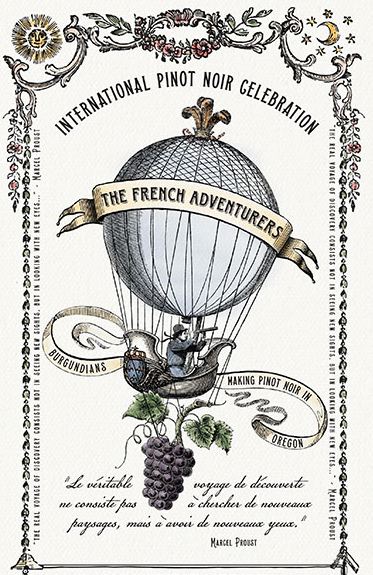 2017 Sta Rita Hills Wine & Fire Planning is in the early stages for the 2017 weekend event on August 18-20 and tickets go on sale the end of April. The format is unchanged from previous years, with a Friday Night Barn Party featuring large format bottles and library wines, a Saturday morning educational Seminar, a Saturday Night Grand Tasting at La Purisima Mission gardens where 40 members of the Sta. Rita Hills Wine Alliance will be pouring. In addition, Wine & Fire Passports will offer a variety of special activities and tastings throughout the weekend. Visit www.staritahills.com/member-events/ for more information.
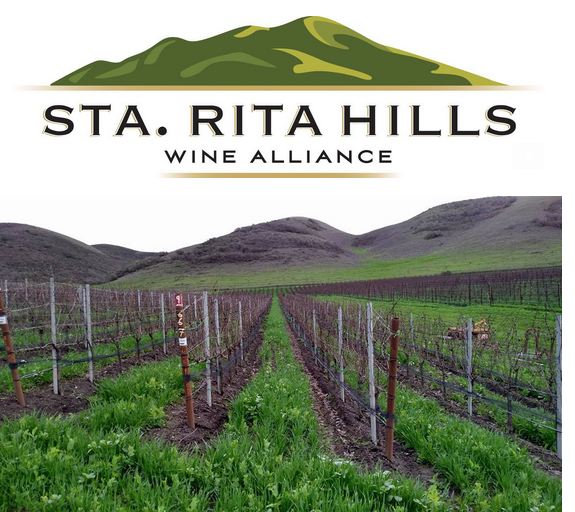 Silicon Valley Wine Auction A 2-day event featuring Santa Cruz Mountains wines, May 20-21, 2017, at Runnymede Sculpture Farm in Woodside, CA. Wine Pairing dinner, Library Wine Reception and Auction on May 20, and a Taste of the Mountains Grand Wine Tasting on May 21. Your favorite Pinot Noir producers will be participating, including Big Basin Vineyards, Mount Eden Vineyards, Sante Arcangeli Family Winery, Thomas Fogarty Winery, Waxwing Wine Cellars, and Windy Oaks Estate Vineyards. For information and tickets, visit www.siliconvalleywineauction.org.
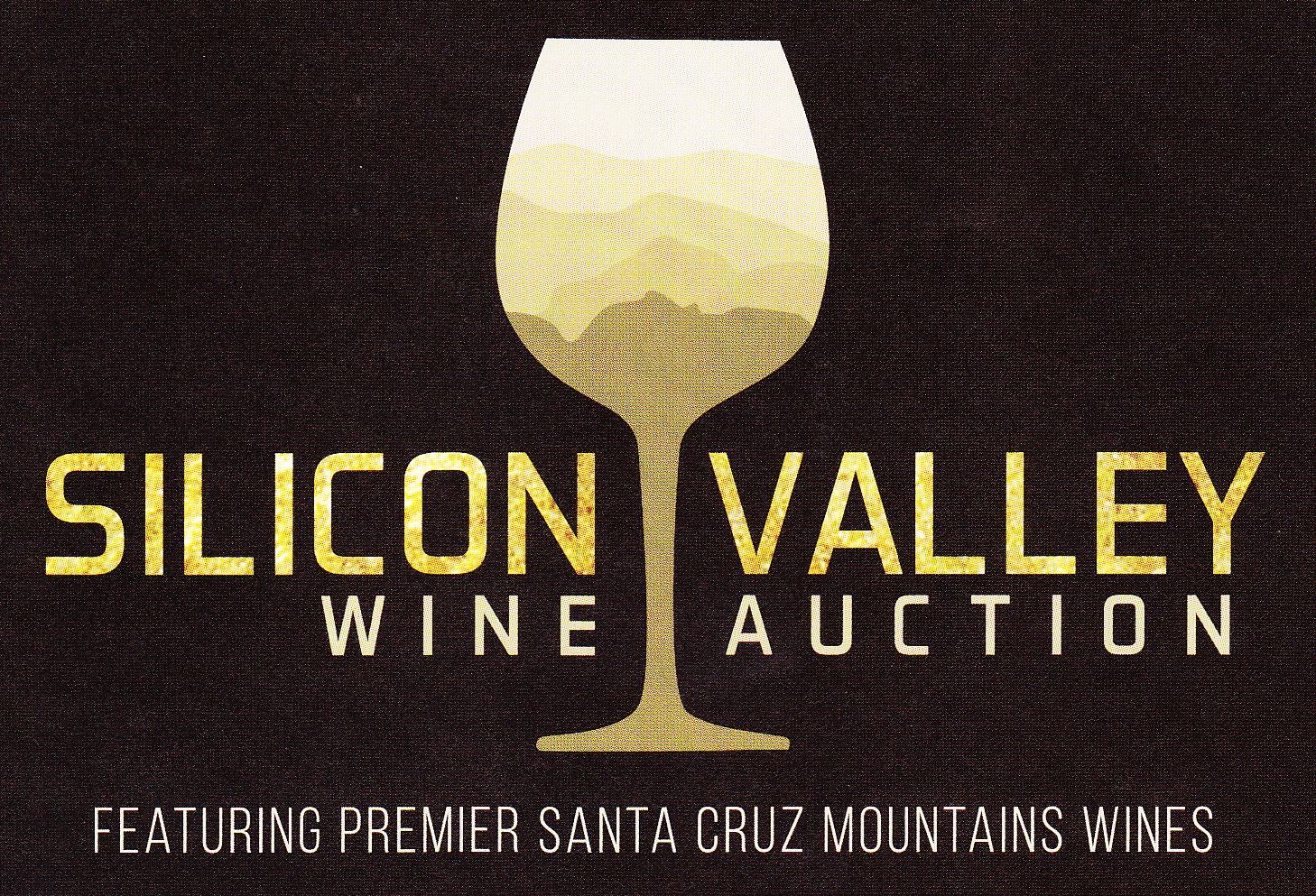 2017 North Coast Wine & Food Festival 90 Gold-Medal wines from the Press Democrat North Coast Wine Challenge, 20 chefs such as Duskie Estes of Zazu Kitchen + Farm, Perry Hoffman of SHED, Daniel Kedan of Backyard Forestville, Christa Luedtke of Boon eat + drink, Dustin Valette of Vallette and Ari Weiswasser of Glen Ellen Star, live music, entertaining talks, and art-inspired gardens at Cornerstone Sonoma Sunset Gardens + Marketplace, Saturday, June 20, 1-4 p.m.. For tickets, visit www.northcoastwineandfood.com, and use discount code NCWFF for $10 off. Wine & Spirits 28th Annual Restaurant Poll The April 2017 of Wine & Spirits reports on their annual restaurant poll (225 restaurants reporting) that indicates the popularity of wines ordered in top restaurants across the US. The sales of French wines in polled restaurants rose to 23.5 percent of the most popular wines (France’s average share was 17 percent over the past ten years). The average price by varietal was $103 for Cabernet Sauvignon, $94 for Chardonnay, $93 for Pinot Noir, $90 for Syrah and $59 for Sauvignon Blanc. The most popular wines by the glass included several Pinot Noirs (with average price): #1 Tyler Winery Santa Barbara Pinot Noir ($21), #2 Meiomi California Pinot Noir ($14), #11 Au Bon Climat Santa Barbara County Le Bon Climat Pinot Noir ($16), #20 La Crema Sonoma Coast Pinot Noir ($11), and #28 Flowers Sonoma Coast Pinot Noir ($25). The 50 most popular wines in America’s top restaurants included Pinot Noir producers #2 Merry Edwards, #13 Frank Family Vineyards, #19 Emeritus Vineyards, #20 Flowers, #24 Belle Glos, #28 Failla, #30 Au Bon Climat, #33 La Crema, #34 Sandhi, #35 Robert Sinskey Vineyards, #37 Kistler, #39 Littorai, #41 Cristom Vineyards, and #646 Meiomi. In 2016, Pinot Noir accounted for 13.6 percent of the most popular wines in US restaurants, about equal to Cabernet Sauvignon at 14.1%, but its share of the most popular wines is the lowest it has been since the post-Sideways boom that started in 2005. The top ten most popular Pinot Noirs were #1 Merry Edwards RRV ($111) and Sonoma Coast ($121), #2 Emeritus Hallberg Ranch RRV ($81), #3 Belle Glos Las Alturas Vineyard SLH ($72), #4 Flowers Sonoma Coast ($96) and Camp Meeting Ridge Sonoma Coast ($147), #5 Littorai Sonoma Coast ($58) and Cerise Vineyard AV ($160), #6 Cristom Mt. Jefferson Cuvee ($69) and Eileen Eola-Amity Hills ($130), #7 Meiomi California ($48), #8 Belle Pente Willamette Valley Estate ($88), #9 Lemelson Thea’s Selection Willamette Valley ($72), and #10 La Crema Monterey ($42) and Sonoma County ($45). The most popular Chardonnays were Cakebread Cellars, Sonoma-Cutrer Vineyards, Rombauer Vineyards, Sandhi, Ramey, Au Bon Climat, Mer Soleil, Patrick Piuze Chablis, Pierre Yves Colin-Morey Mersault, Landmark and Neyers.
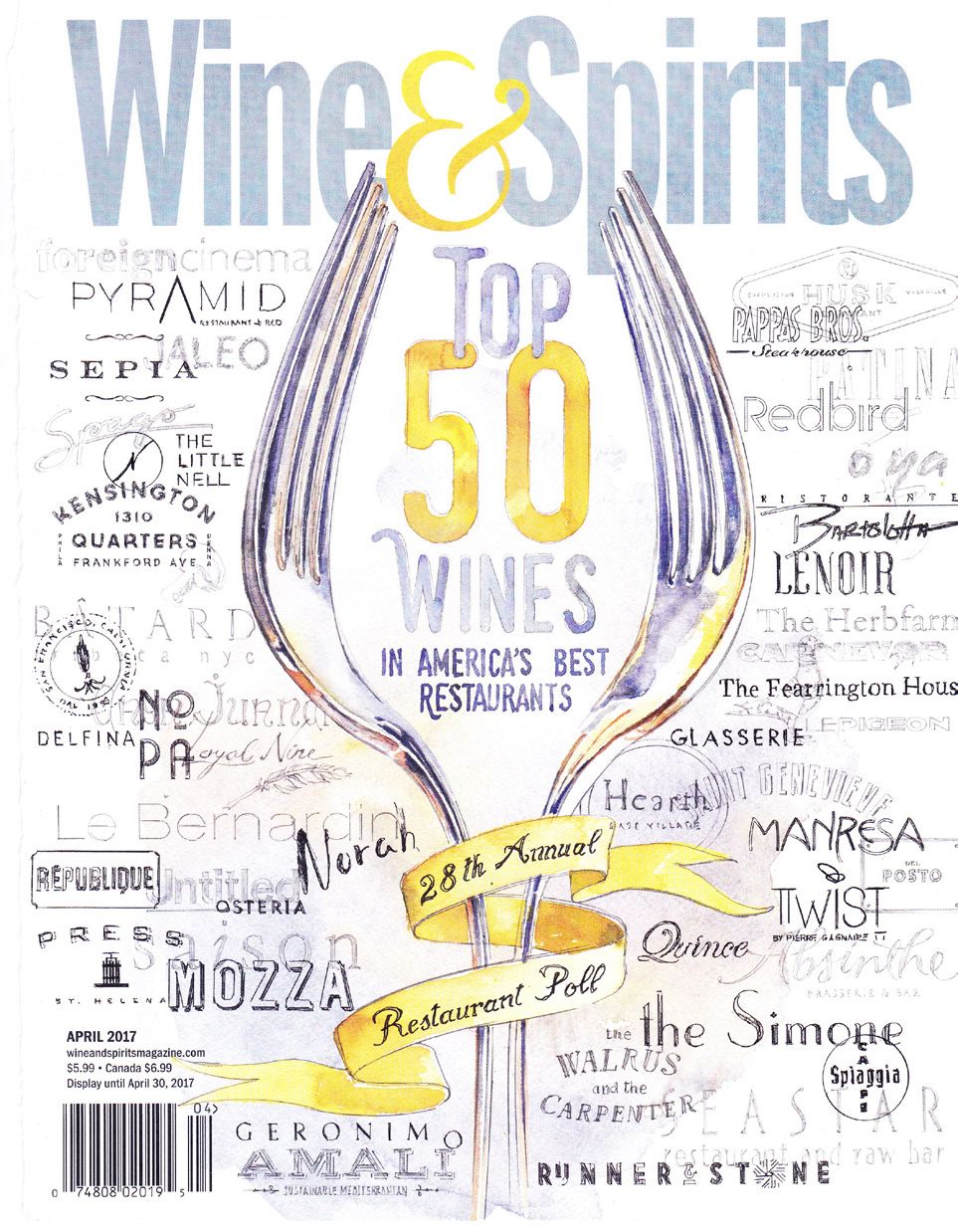 Wine Educator Bruce Cass Cass may not have received the wine press recognition that he deserved upon passing last September at the age of 68. A 1969 Stanford University graduate, he started Wine Associates, a wine education company, three years after school. He taught at Stanford and UC-Berkeley and developed a curriculum known as Wine on Campus used for wine appreciation classes at colleges across the US. In the 1970s, as California’s wine industry was becoming more successful, Cass developed a more formal Wine on Campus curriculum for the Wine Institute of California. In 1977, he became one of the West Coast founders of the Society of Wine Educators, a nonprofit that advanced wine education and offered certification. He published The Winewright’s Register in 1985, intended to assist small wineries in California with better understanding of enology and viticulture. This was followed by the release of the award-winning Wine Educators Handbook. Cass collaborated with both James Halliday on the Wine Atlas of California (1993) and Jancis Robinson on The Oxford Companion to the Wines of North America (2000). He continued to teach classes in the Bay area and Sierra foothills where he resided until his passing. New Hydrogel in Wine Production Stanford materials scientist Eric Appel studies hydrogels, materials that behave like solids but hold and absorb large amounts of water. Commonly found in soft contact lens and disposable diapers, hydrogels may have a place in winemaking. Appel’s lab has created a new hydrogel that is nontoxic, biodegradable, moldable and sprayable that is inexpensive to make and easy to dispose of. It shows potential as a way of clearing pipes at wineries. Wineries transfer wine from fermenters to barrels frequently, but about 2 percent of the product remains in the pipeline until it is flushed away with water. The new hydrogel can make its way through the maze of pipes and valves to push the wine out. Because it does not mix with wine and because it is tasteless and odorless as well as food-grade, it performs the job beautifully. West Sonoma Coast Vintners Partners with Outstanding in the Field Members of the West Sonoma Coast Vintners have joined Outstanding in the Field to become their winery partner for several dinners in California and around the US. Tickets for these dinners went on Sale March 20. To view upcoming dinner locations, visit www.outstandinginthefield.com.
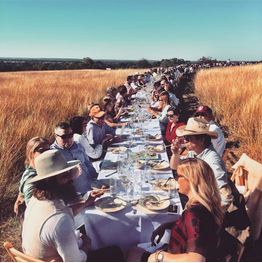 Decanter Details Whole Bunch Fermentation A February 1, 2017, article by Simon Woolf includes nice graphics to illustrate the process of whole bunch (the UK term; we use whole cluster in the US) fermentation. https://keyassets.timeincuk.net/inspirewp/live/wp-content/uploads/sites/34/2017/01/Whole-bunchfermentation- full.jpg. Retirement Planning If you had bought $1,000.00 of Nortel stock one year ago, it would now be worth $49.00. With Enron, you would have had $16.50 left of the original $1,000.00. With WorldCom, you would have had less than $5.00 left. If you had bought $1,000 of Delta Air Lines, you would have $49.00 left. But, if you had bought $1,000.00 worth of wine one year ago, drunk all the wine, then turned in the bottles for the recycling refund, you would have had $214.00. Based on this, the best current investment advice is to drink plenty of wine and recycle. (Courtesy of David Lloyd of Eldridge Estate in Australia). Drip-free Wine Bottle Researchers at Brandeis University who are also wine lovers, have developed a wine bottle with a diamond-cut groove below the lip that guarantees a pour without drips. Droplets encounter the groove and can’t traverse it so they fall off the bottle into the glass. No need for a foil pourer or other gadget to prevent spills.
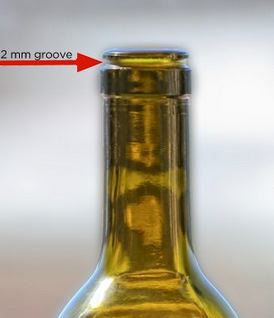 Trailblazing Women Winemakers An article researched and written by Professors Lucia and John Gilbert of Santa Clara University titled, “California’s Trailblazing Women Winemakers: The First 20 Years (1965 through 1984) is posted at: https://webpages.scu.edu/womenwinemakers/pioneeringwomen.php. Alcohol Again shown to Reduce Risk of Heart Disease The largest study ever looked at the health records of nearly two million people from the Cardiovascular research using Linked Bespoke studies and Electronic Health Records (CALIBER) program from 1997 to 2010. The researchers looked at the association of alcohol consumption and twelve heart diseases. Compared with moderate drinkers, non-drinkers were more likely to suffer from an increased risk of seven of the twelve diseases as a first diagnosis: unstable angina, myocardial infarction, unexpected coronary death, heart failure, ischemic stroke, peripheral artery disease and abdominal aortic aneurysm. In contrast, heavy drinkers were shown to be at serious risk for seven of the twelve diseases with high instances of unexpected coronary death and heart failure. Heavy drinkers also had a higher risk of liver diseases and cancers. Few associations differed in their magnitude by sex. The study did not account for differences in risk by alcoholic beverage type, the impact of drinking patterns or changes in drinking over time. In addition, the study was based on self reporting of alcohol intake and no standard questions about drinking were used. The findings of this study that moderate alcohol consumption is associated with a lower risk of initially presenting with a range of cardiovascular diseases is consistent with results of previous small studies. Read the full article here: http://www.bmj.com/content/356/bmj.j909.
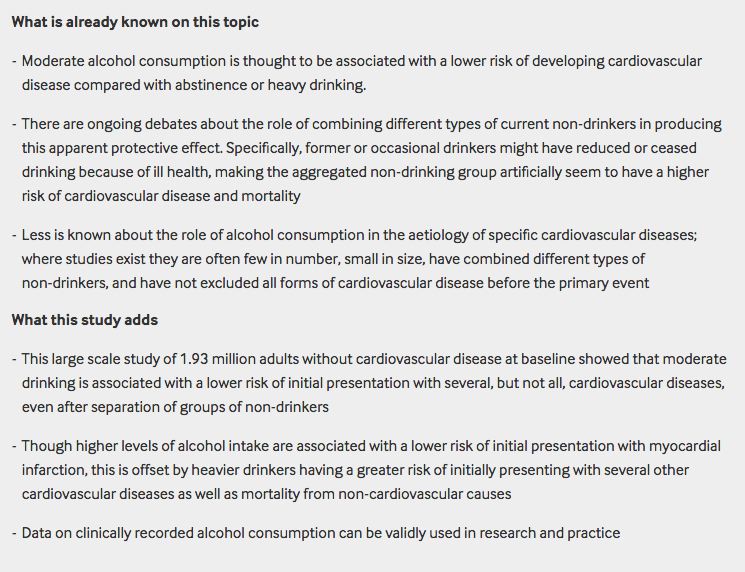 Jackson Family Wines Building Winery in McMinnville, Oregon A new winery is being built named ‘Corsair’ after the WW II fighter-bomber related to an old air base nearby. Jackson Family Wines (JFW) now has 700 acres of vineyards in production in Oregon and more vineyards are being planted including 37 acres in the Dundee Hills, so a dedicated facility was needed. Love Pinot? Buy Cristom The 2014 Cristom Eileen Vineyard Eola-Amity-Hills Pinot Noir was named one of the year’s best United States Pinot Noirs by Wine & Spirits magazine (95 score). I reviewed the wine in December 2016 and scored it 94, saying “You will want to elope with Eileen.” I liked the Louise Vineyard even more (95 score) and Marjorie Vineyard was the one I wanted most to take to the dance (96 score). Visit www.cristomwineyards.com.
Cork Dork
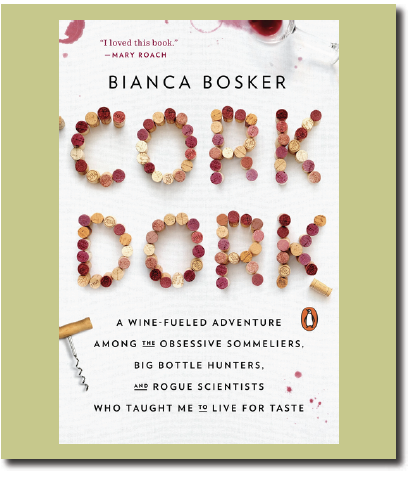 I consider myself a Pinot geek, a term in common parlance that roughly equates to the term, “cork dork”. But even as I am fanatically committed to wine in general and Pinot Noir specifically, I found through reading this book that my obsession pales in comparison to the fraternity of true cork dorks, often seen in public working as sommeliers. Former technical journalist, Bianca Bosker, takes the reader on her wine-fueled journey as she progresses from a philistine (her term) to a Certified Master Sommelier in a matter of a year’s time. In joining the sommelier-in-training subculture, she found that she could train, organize and heighten her aroma and flavor senses to analyze and enjoy wine on a level only experienced by devoted cork dorks. She became living proof of the well-recognized idea that professional tasters are able to teach themselves to experience wine differently than novices. I could relate because I have traveled a similar path as well. I found myself laughing out loud at several junctures, even as I was learning about wine surreptitiously. Did you know that grape tannins are experienced through a rough feeling on the tongue and roof of the mouth while oak barrel tannins dry out the spot between the lips and gums? Or that the three key attributes that pros consistently consider when rating a wine are its balance, complexity and finish? Did you know that there are more than sixty additives that can legally go into wine, and one of them, Mega Purple (a grape-juice concentrate), is in just about every wine priced under $20? Not surprisingly, my favorite quote in the book references Pinot Noir, specifically Burgundy. “Pinot from Burgundy is such a whore. It’s like the boyfriend who generally treats you like shit but shows up at the right time with flowers and chocolates. I’ve never watched someone open what was supposed to be an outstanding bottle of Burgundy without a look of mild terror on their face.” This book should win a James Beard Award, or even a Nobel Prize if they gave out such a thing for wine writing. Trust me, it is that good. Published in paperback with 307 captivating pages and priced at $17 ($9.88 on Amazon), this book will give you considerably more pleasure than any $17 bottle of wine. In a related matter, filmmakers Lani Chan and Bianca Holman detail the work it takes to become a Master Sommelier if you are a woman in the film “Somm State of Mind.” The film will be shown in the Sonoma Film Festival in April. |